If you found neither eggs nor queen cells during hive inspection, we will here try to help you determine if that hive is queenless.
Although the absence of eggs indicates that the hive may be without a queen, this isn't always the case.
You can’t determine this by trying to find the queen
If you suspect that the hive is queenless there is no point looking for the queen. You would only unnecessarily disturb the bees and waste your time.
It's not always possible to find a queen, so if you can't manage to find her you can't be sure that she isn't inside the hive - maybe she is just hiding somewhere.
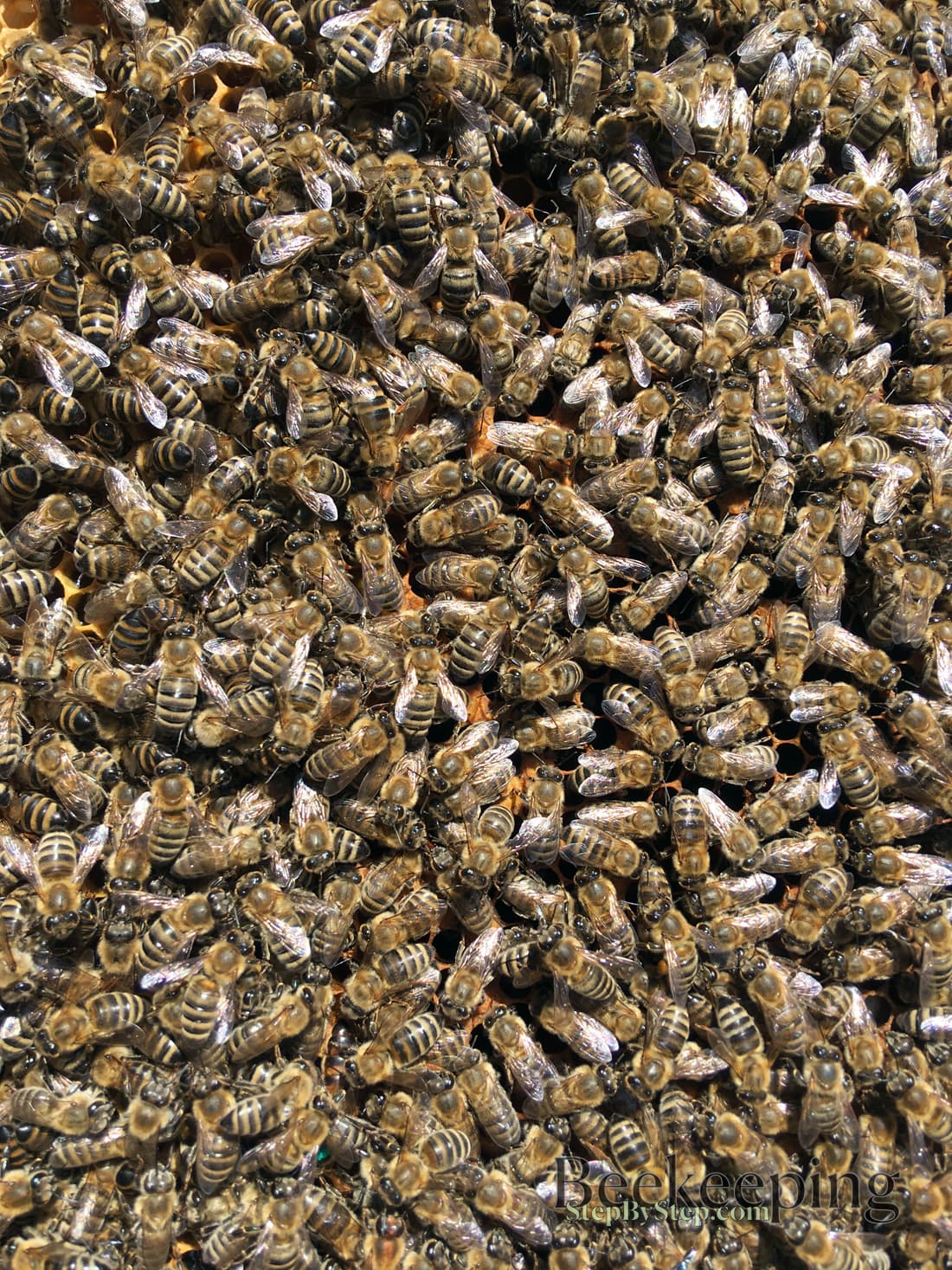
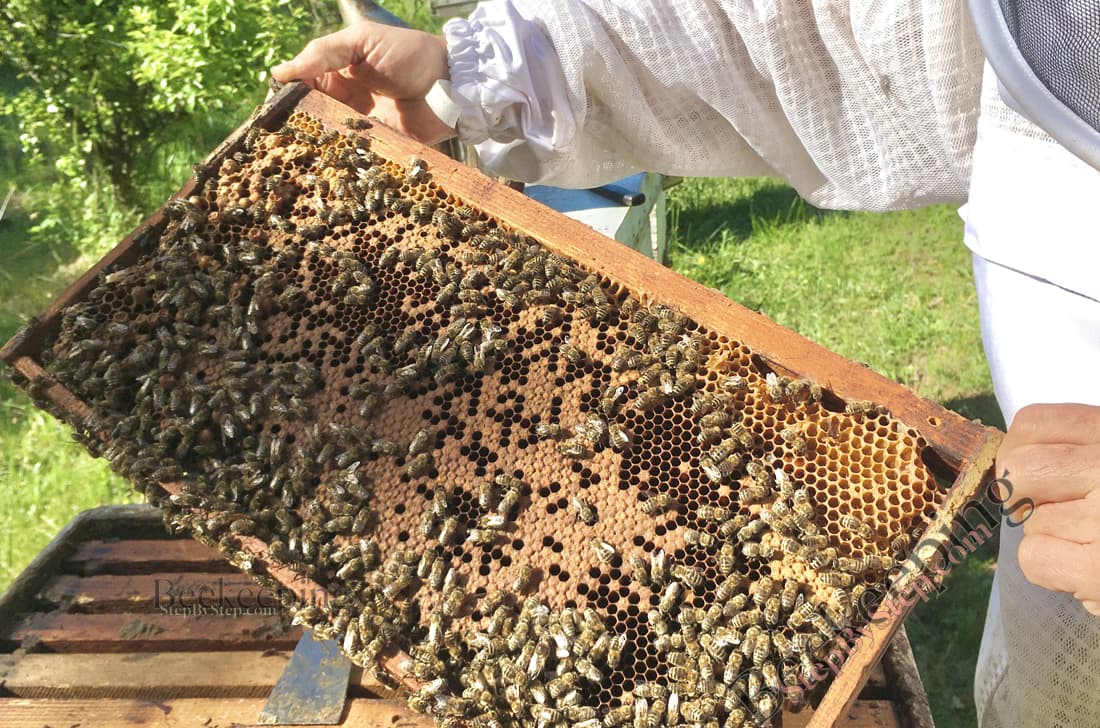
No eggs
If there are no eggs inside the beehive, our first presumption is that there is no queen in the hive.
However, it is possible that the colony has a queen but she, for some reason, stopped laying eggs for a shorter or longer period of time.
This happens:
![]() In fall - in preparation for winter, or
In fall - in preparation for winter, or
![]() If there is no food - honey and/or pollen.
If there is no food - honey and/or pollen.
Choose an option:
If it is fall right now in your area, go to: Fall - Brood Reduction.
Otherwise, continue reading 👇.
Honey and pollen supplies

Honey
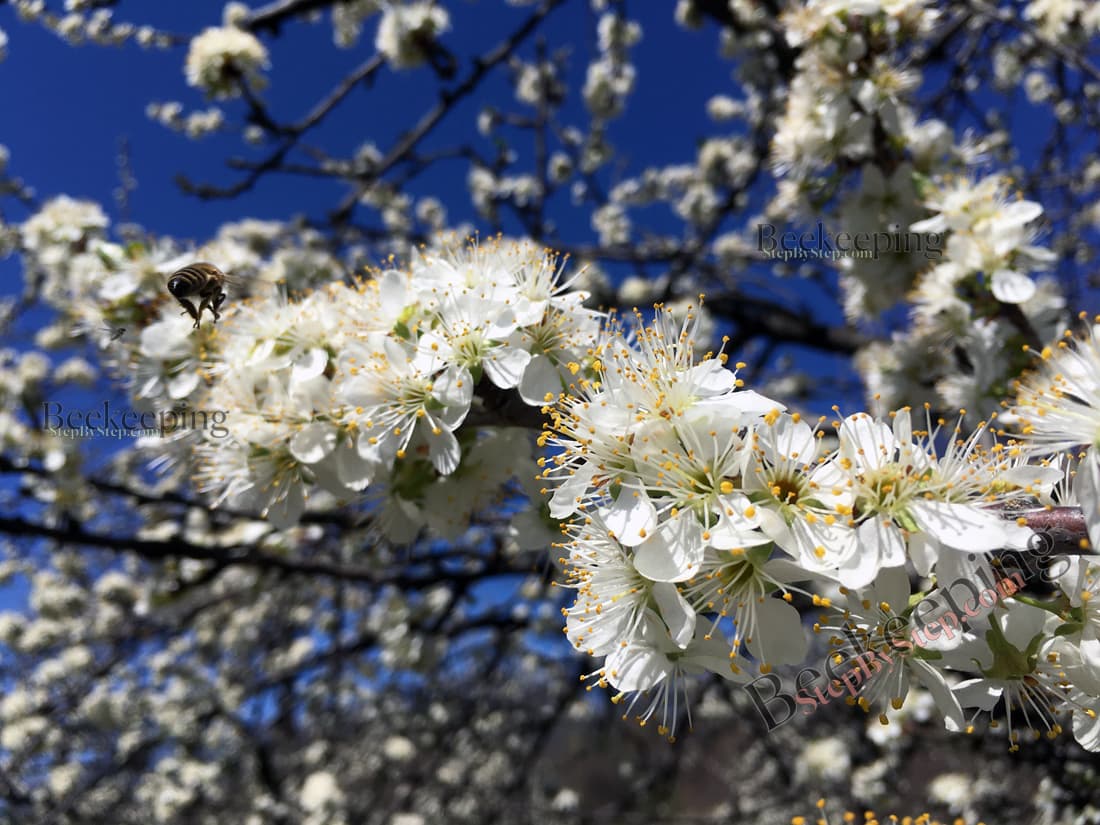
If there is no honey flow in nature, and there is not enough supply of honey inside the hive, the queen will reduce laying eggs or completely stop until the bees start bringing in food again.
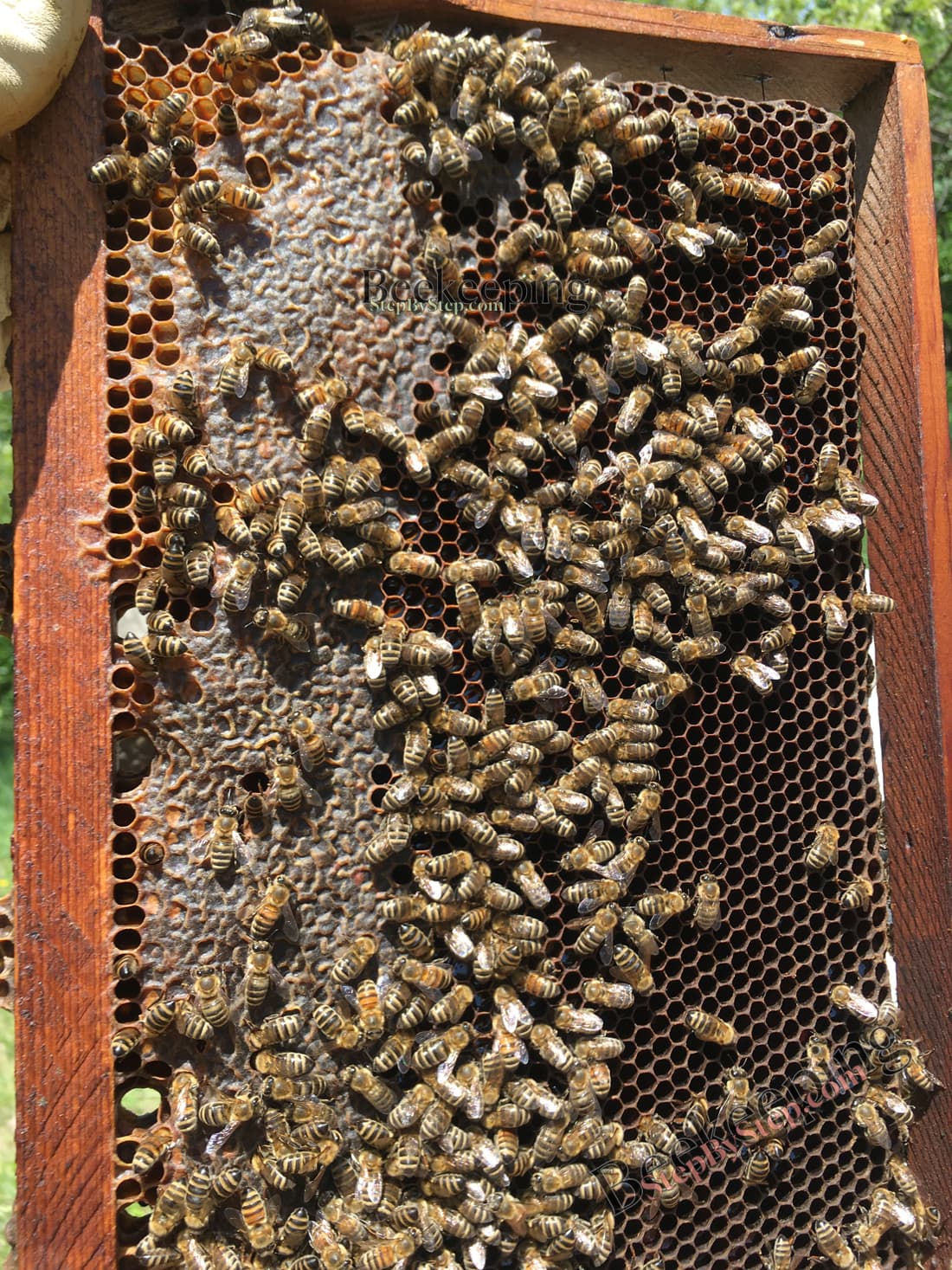
There should be 5-10 kg of honey supply in the hive.
One completely full deep frame has approximately 2kg of honey.
Based on this fact we can determine the approximate amount of honey in the hive.
Advertisement :
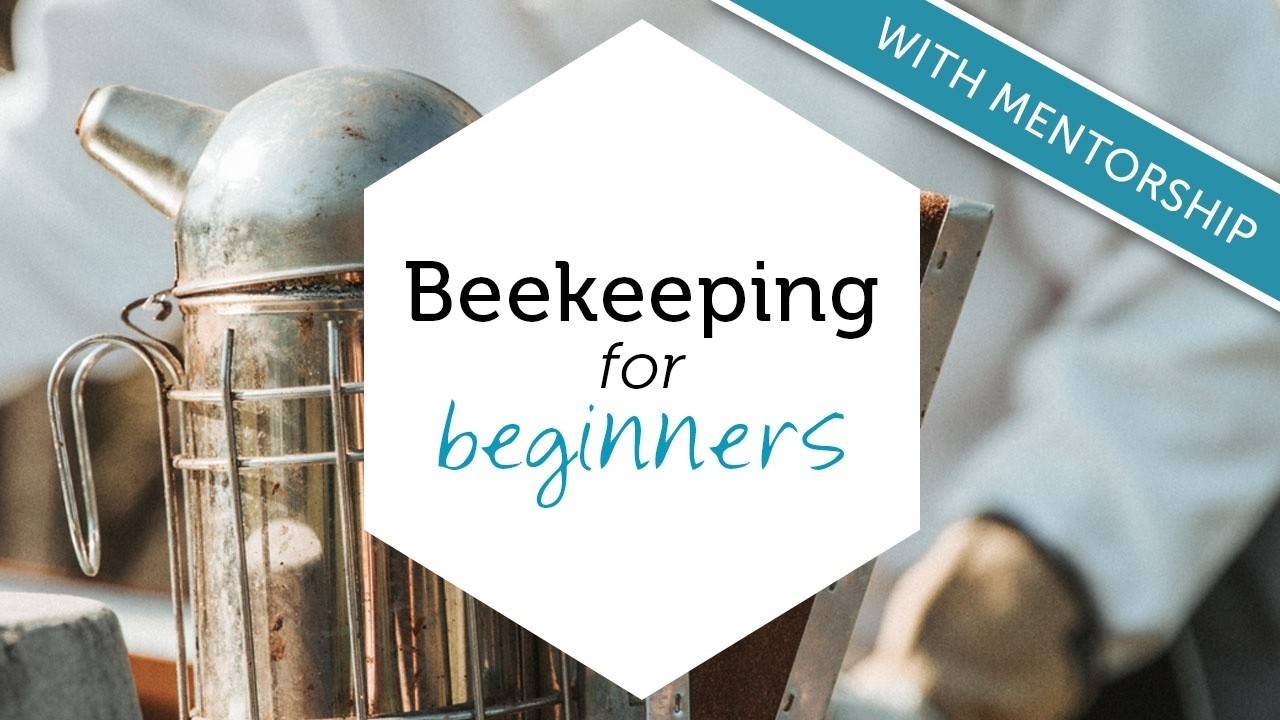
Beekeeping for Beginners
Everything you need to know!
This is a full beekeeping course for beginners.
Pollen
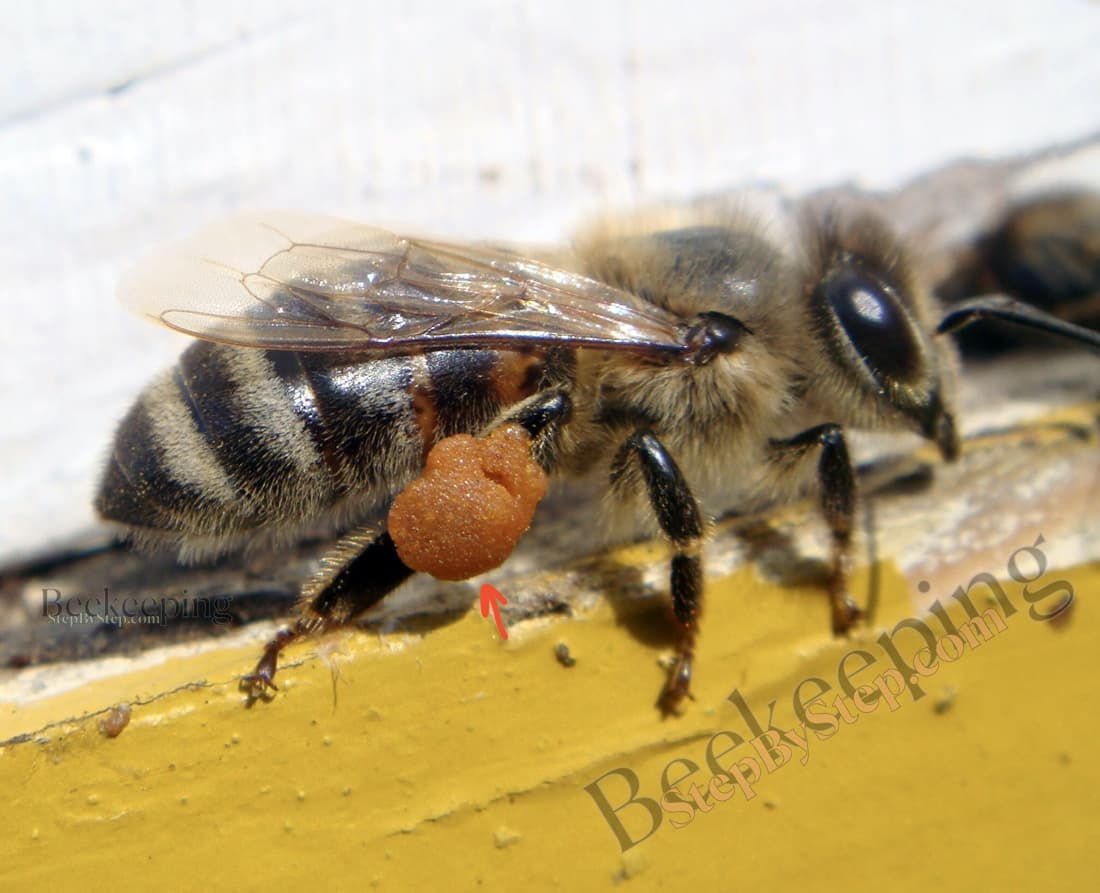
Same thing could happen if there is no pollen in nature and the bees have used up all the supplies from the hive.
Pollen is used for feeding the brood.
Even if the hive is full of honey but there is no pollen, the queen will stop laying eggs because bees won't have anything to feed that brood.
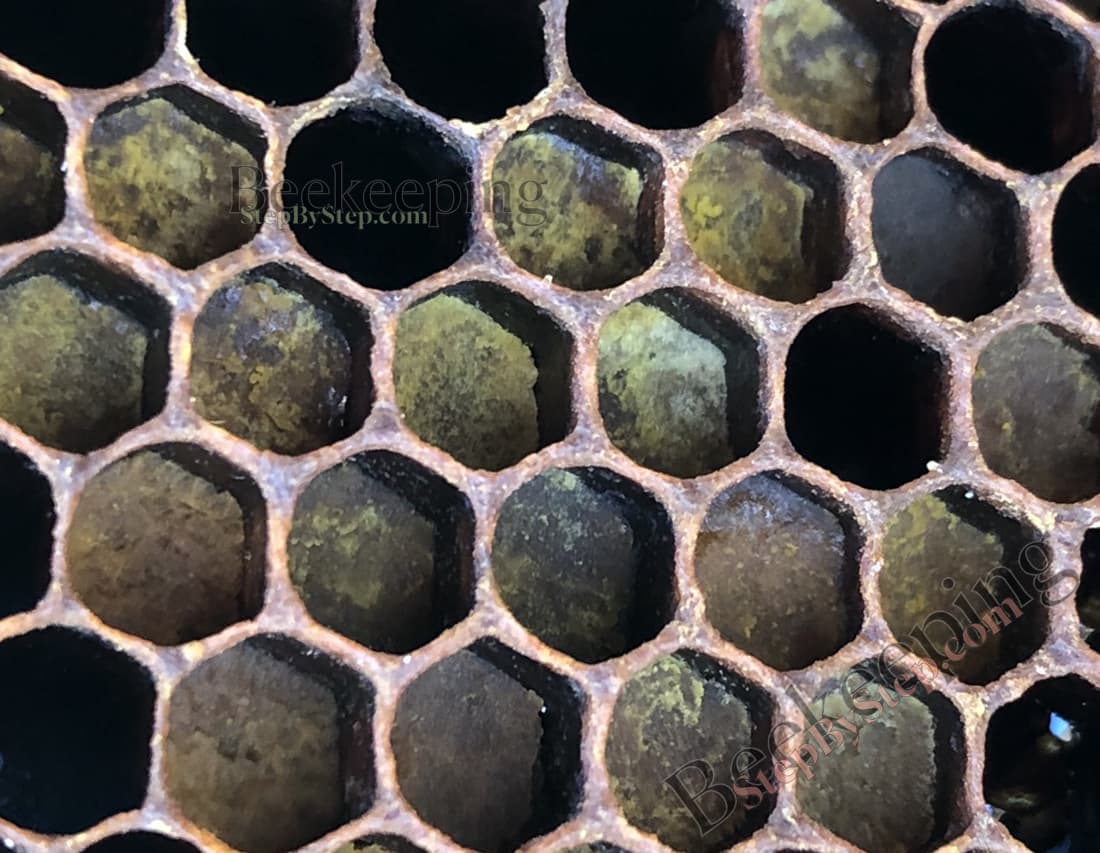
Lack of pollen doesn't happen as often as the lack of honey.
Observing the hive's entrance, we can determine whether the bees are gathering pollen.
If some of the bees have little balls of pollen on their legs, that means that there is pollen in nature (we can’t see if they are bringing nectar).

Choose an option:
If there is enough honey and pollen in the hive, go to: Adding Young Brood Frame.
If you concluded that the colony lacks honey or pollen, continue reading 👇
Problem with honey and/or pollen supplies
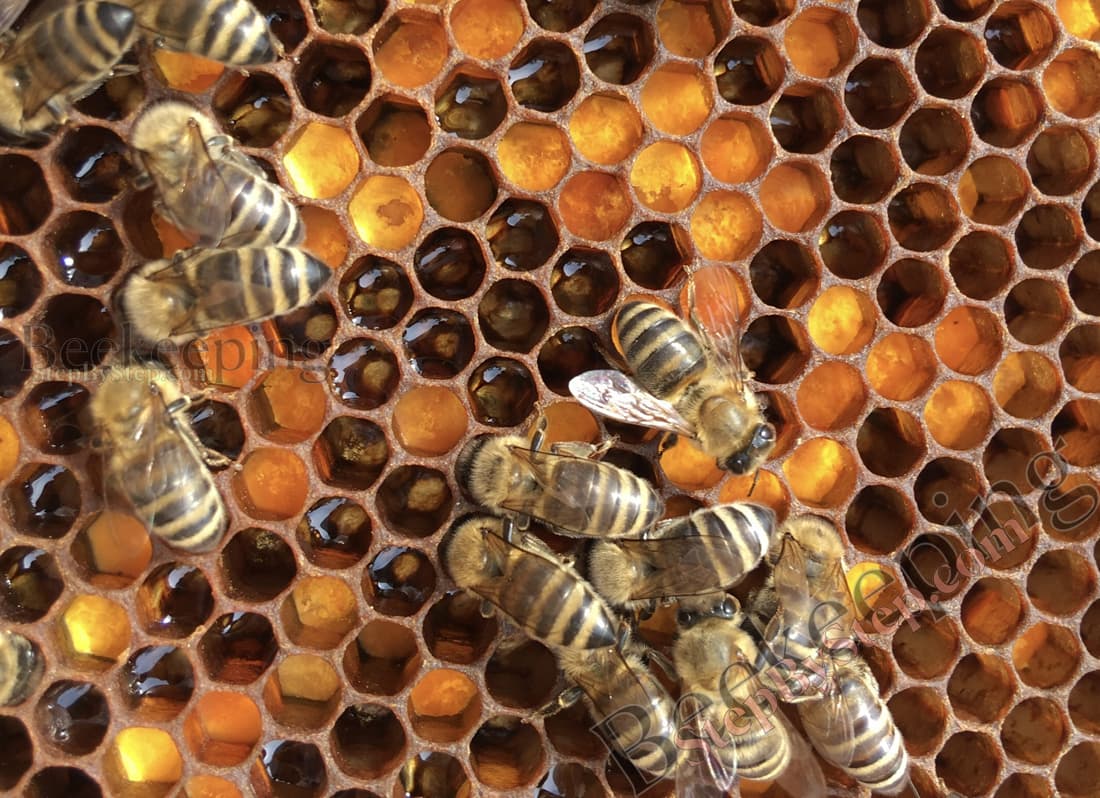
No honey
1If you concluded that there is not enough honey, the hive should be fed with 1l of sugar water every night.

2After 5 to 7 days you should repeat the inspection to check if the queen started laying eggs. Follow these steps: Basic Hive Inspection.

After that time, you should continue to feed the colony every other night until the colony has enough honey supply.
No pollen
1If there is no pollen, you can put a pollen patty or some other pollen substitute you can buy at a beekeeping equipment store.
If there are SHB (Small hive beetles) in your area, always put just a little piece of pollen patty, and only when the bees eat it add some more. It’s because SHB love pollen patties.
As pollen substitutes beekeepers sometimes put: yeast, powdered milk, powdered eggs... They consist of high levels of protein, but this still isn't an adequate replacement for pollen - it simply isn't natural bee food.
No pollen substitute can replace real pollen.

Pollen patties and other pollen substitutes shouldn’t be given to bees unless there's a problem with pollen. Bees need real pollen and nothing cannot replace it.
2After 5-7 days, if there is a queen, she should start laying so inspect the colony to see if there are eggs. Follow these steps: Basic Hive Inspection.

If queen starts laying
During the next few inspections, pay attention if everything is fine with the colony and the brood - if there is a healthy worker brood in all of its development stages.